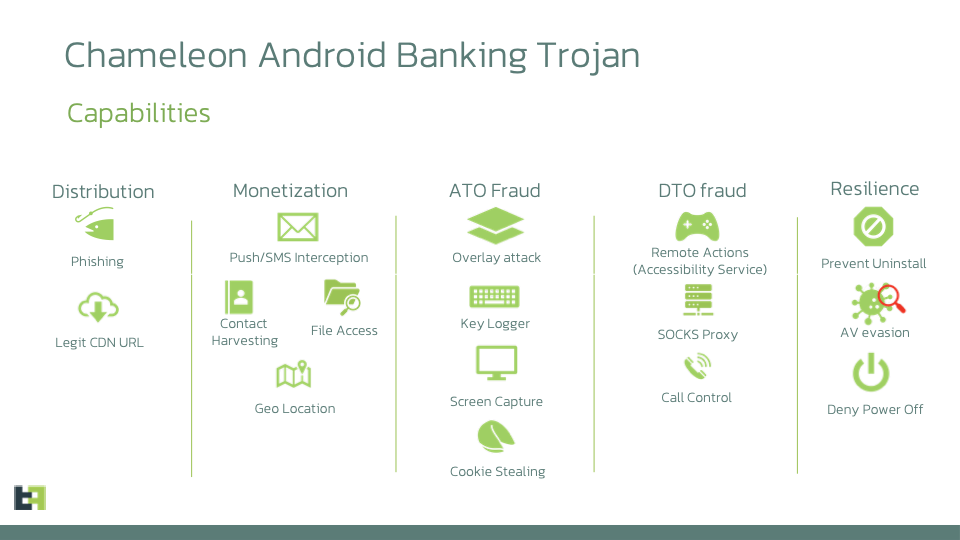
Image Credit: Threat Fabric
In the ever-evolving world of cybersecurity threats, a new contender has emerged, showcasing the relentless adaptability and sophistication of malware targeting Android users. Dutch mobile security firm ThreatFabric detected “Chameleon,” a banking trojan first identified in early 2023. This malicious entity, thriving in the digital ecosystem, specifically preys upon users in Australia and Poland, masquerading as legitimate mobile banking applications to infiltrate unsuspecting devices.
Chameleon, true to its name, exhibits a remarkable ability to adapt and evolve. Its latest iteration reveals enhanced capabilities, including the astonishing ability to bypass biometric authentication systems. This feature, a significant leap in the malware’s sophistication, poses a formidable challenge to the security protocols of mobile devices. By exploiting the Accessibility Service, Chameleon executes Device Takeover (DTO) attacks with chilling efficiency. The trojan’s reach has also expanded, now targeting users in the United Kingdom and Italy, further amplifying its potential impact.

One of the trojan’s most alarming advancements is its ability to manipulate devices to bypass biometric prompts. This maneuver, executed through a command known as “interrupt_biometric,” enables the trojan to switch from biometric to PIN authentication, thereby outwitting one of the most trusted security measures in modern devices. This feature leverages the AccessibilityEvent action, allowing the malware to unlock devices at will, a significant concern for cybersecurity experts.
Another critical enhancement in Chameleon’s arsenal is its compatibility with Android 13. The trojan can now display an HTML page to prompt users to enable the Accessibility Service on devices with restricted settings. This capability signifies the malware’s ability to circumvent the latest security measures implemented in newer Android versions.
As the threat landscape continues to evolve, understanding the intricacies of banking trojan Chameleon is paramount in devising effective defense strategies. The emergence of such sophisticated trojans underscores the need for constant vigilance and innovation in cybersecurity measures. The battle against these cyber threats is ongoing, and staying informed is the key to safeguarding our digital domains against such cunning adversaries.